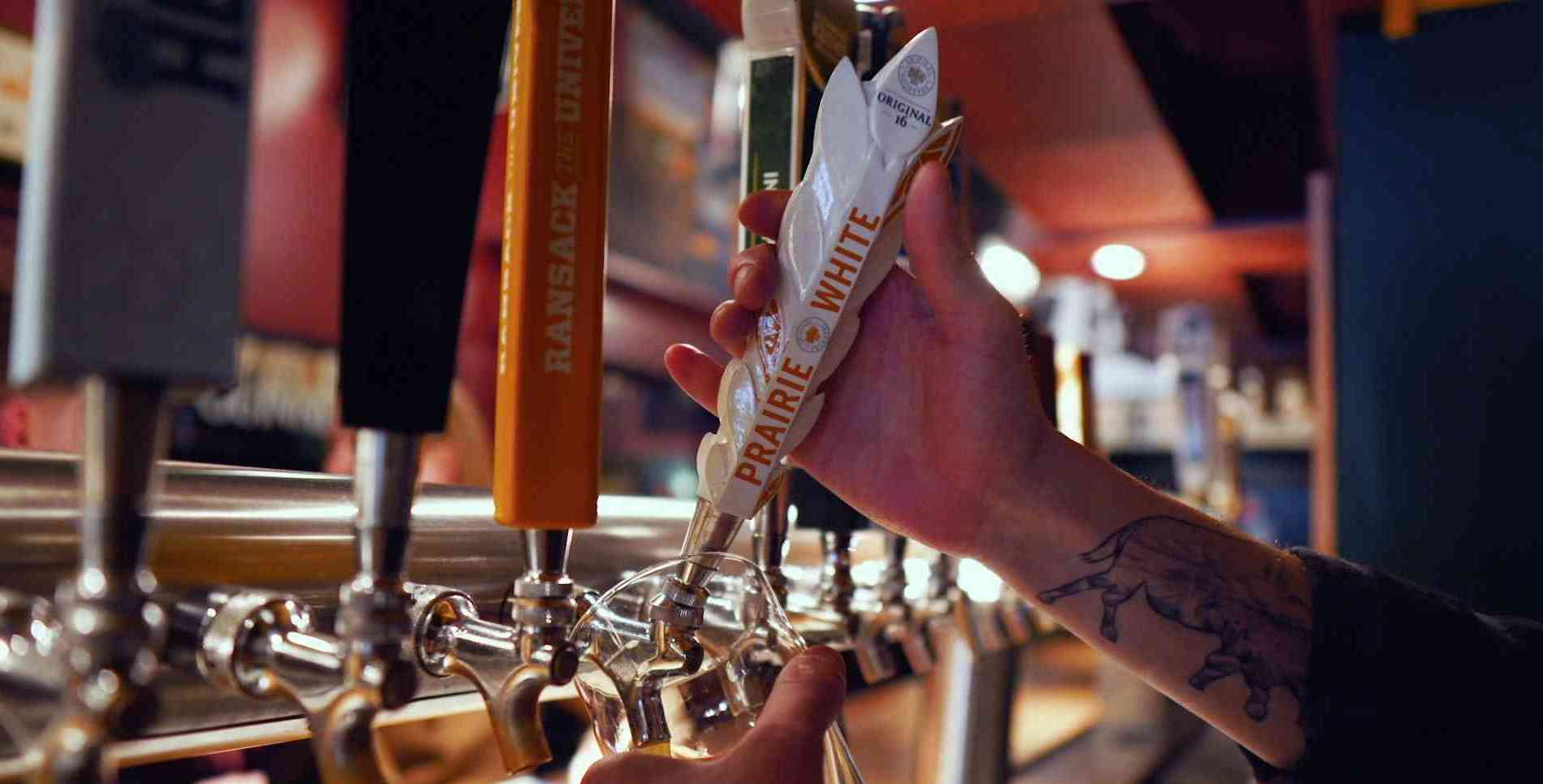Brands show up first as a promise. Something, often marketing, tells you what it’s going to be like. That is followed by an experience with the brand. When you engage with the product.
Your brand promise is your promise of performance.
A promise of performance is the only reason we believe in brands. Hart Weichselbaum stated it perfectly in Readings in Account Planning, Part 2, “If every bottle of Heinz Tomato Ketchup tasted different from the last, the brand would have no meaning. If consumers are prepared to forgive the exceptional bad experience from a trusted brand, this is because they know it is exceptional.”
The brand promise is what you promise to replicate with every experience. For some brands, like Heinz Ketchup, that means the product needs to remain unchanged. But most of us deal with brands that change constantly. Most brands are always working to improve, update and meet changing demands. But the brand still needs to live up to its promise. If it doesn’t, no matter how strong its history, it will eventually lose its power.
The distinction is even more clear when you push it to the extreme. This is what we see with brands like Dove and Gillette promising more than just good ketchup.
In their book, Can’t Buy Me Like, Bob Garfield and Doug Levy describe it this way:
“Let’s say your brand’s mission was “NeetFreek exists to make cleaning cleaner.” Its Brand Promise, like everything else at FreekCorp., is informed by that mission, but it’s a big world out there and not everyone is motivated by what motivates a sponge manufacturer. Hence NeetFreek’s Brand Promise: “We’re gonna make it easier for you, and fun and kind of inspiring to do the best you can.” Having codified its point of view, the brand must now make sure its products or services meet the promise, that its personality invites others to collaborate based on shared interests and values, however profound or mundane.”
The brand promise can’t just be a promise. It needs to be a promise delivered.
When we first started working with the Saskatchewan Roughriders Football Club they faced a common problem for pro sports teams. Attendance waivered with their performance. It was quite easy to draw a straight line from winning record to the number of seats sold. The temptation for a marketer is to tie directly to your advertising. "People support a winner so we should promise better performance." In a sense, sell hope.
This works when a team has a successful record. But hope doesn’t last long. In fact, it rarely lasts beyond the first few games. It certainly won’t last through multiple seasons. When working through the brand development for the Saskatchewan Roughriders, we looked to the reasons why fans would attend a game, regardless of the record.
To find the promise look to your brand benefits.
The many benefits a brand offers is an ideal place to look for your brand promise. What are the benefits to be a fan? Well, there are no functional benefits. But there are emotional benefits. And there is plenty of research on what those benefits are.
In their paper Brand Image and Fan Loyalty in Professional Team Sport, the authors suggest the benefits most associated with sports teams are: pride in place, fan identification, and peer-group acceptance. In addition, the following benefits are relevant: nostalgia (evoked fond memories), escape (get away from it all), socializing and companionship, emotions, and entertainment.
Socializing and companionship refer to developing and maintaining relations with other fans. Many fans particularly enjoy watching games in the company of people who share their interest in the respective activity (McDonald, Milne, & Hong, 2002).
That is Rider Nation. That is Riderville.
The promise emerged that the Saskatchewan Roughriders bring people together.
How do you know if you’ve got the brand promise right?
One way, is to check if the brand promise works across channels. A brand promise should be capable of being delivered through all channels.
The Saskatchewan Roughriders quite literally bring us together, each week during Rider season we gather to watch them play. Together we experience joy, pride, or ecstasy, as well as anger, frustration, worry, or shame. Few brands can connect with that kind of emotion.
But the promise runs deeper. Rider gear brings us together. We wear the uniform on game day. But we also recognize each other across Canada by wearing the shield. We fly the flag on vacation, in our work and our homes. And when we do, we share a bond that’s as shallow as talking about the weather but also as deep as sharing a religion.
So, branding can satisfy various needs for people. And work on different levels in different ways. They may have started as a form of identification. The brand, through its promise, gives us certainty; we know what we’ll get. It also becomes a kind of currency for us to interact with each other. In a way, the public hijacked the brand from the brand. Which is why we talk about brands as a badge.
What if your brand has few or no unique benefits?
Commodity brands, (soap, beverages…) have difficulty finding differentiation on benefits. Their brand differentiation is less and less about performance, the unique selling proposition often becomes the unique salience proposition. The assumption is we’ll consider your brand because it has something going for it.
This has led to some amazing and successful brand promises and a few missteps.
The Dove self-esteem project is a brilliant association to the brand and real beauty. Dove attaches itself to the idea that beauty is not skin deep. They make that choice boldly in their marketing by highlighting the real beauty in women.
The promise is natural beauty. The marketing moves beyond cleansing. The product boasts nourishment for your skin. The marketing nourishes our self-esteem. The benefits and promise align.
It’s a strong creative platform. Be true to yourself as Bob Garfield highlights in Can’t Buy Me Like.
“But, for heaven’s sake, this is a search for affinities, not for prospects. Remember Matt Dillon’s character in There’s Something About Mary? He eavesdropped on Mary (Cameron Diaz) and discovered she was interested in architecture, Nepal and working with mentally challenged kids—so he pretended to be an architect just back from Nepal and on his way to a volunteer gig. He was, of course, eventually exposed as a fraud and humiliated. So, yeah, don’t do that.”
Gillette recently launched its campaign against toxic masculinity. Cleverly flipping the intent of their tagline by changing from The Best A Man Can Get, to The Best Men Can Be.
Time will tell if Gillette is sincere in their promise to support The Best Men Can Be, but it certainly feels like the alignment is disingenuous. The fact that it’s being branded as a campaign against toxic masculinity as opposed to a campaign for strong men, is problematic
How do you find a brand affinity that works?
This is the hard work of brand planning.
We’ve conducted dozens of brand sessions that work to discover the authenticity in brands. To succeed, the promise must be built on truth.
And, just like Heinz, if you promise a certain taste or an affinity to a movement, you need to deliver. In The Attention Merchants, Tim Wu frames the question you should be asking.
“I wonder whether all top management are involved deeply enough in the nature of their brands. Do they realize fully enough that it is from the success of brands rather than as products that the profits will come? Do they fully understand the nature of brands? Do they set company objectives in terms of brand positioning or simply in financial terms? Or is the responsibility for brand positioning delegated to the junior brand manager?”
Your brand promise should be your company’s GPS.
“People don't have time to figure out what your brand stands for. It is up to you to make your brand stand for something.”
Hey, Whipple, Squeeze This
—Luke Sullivan



